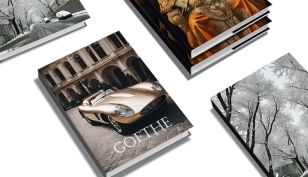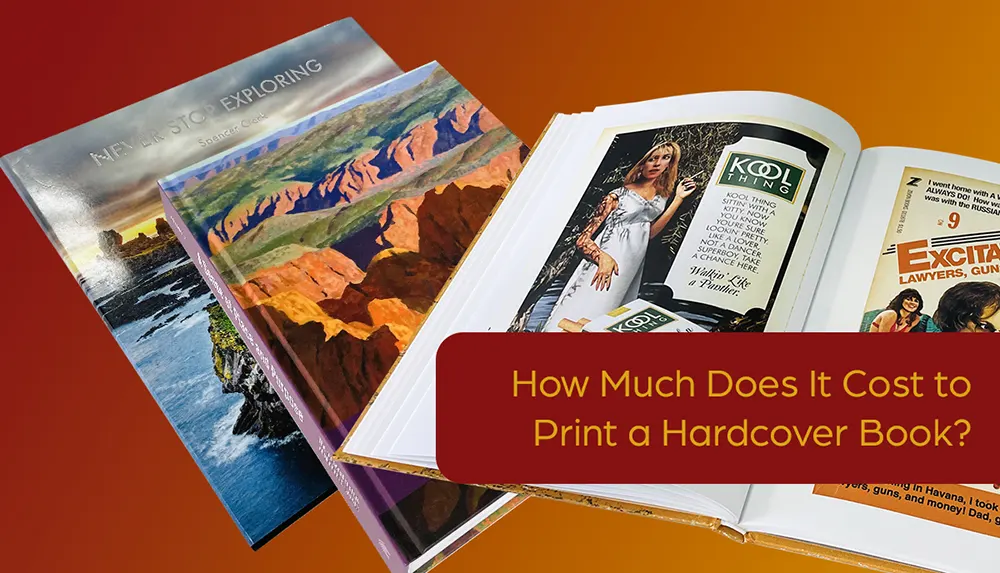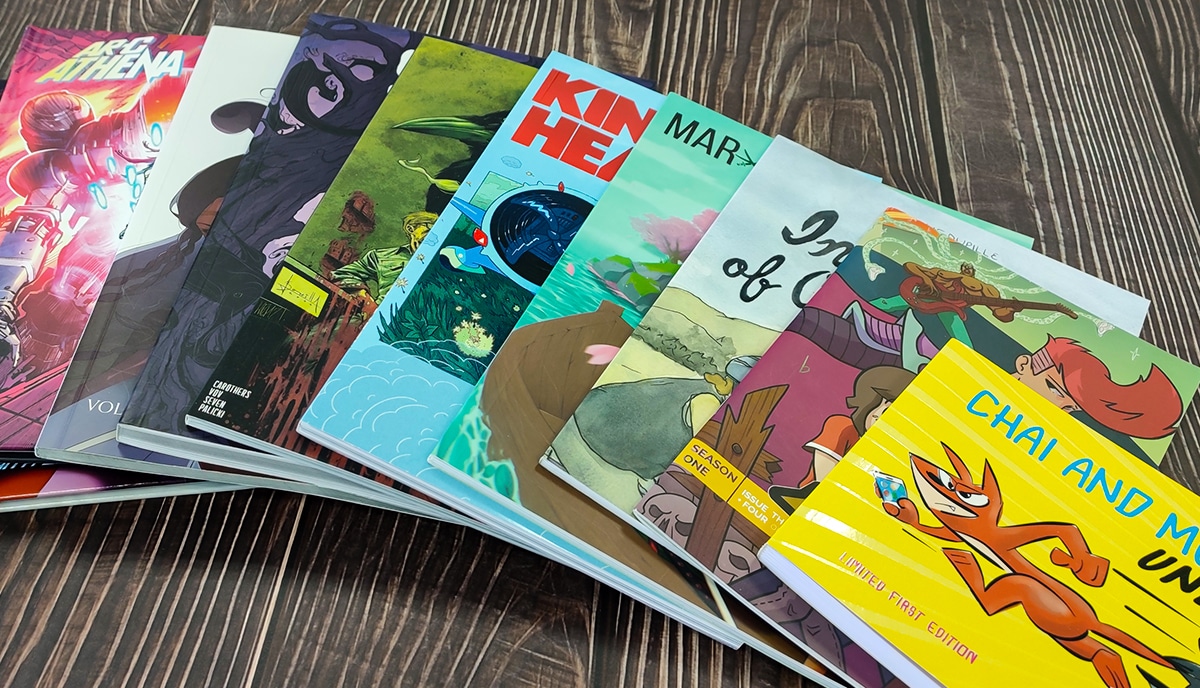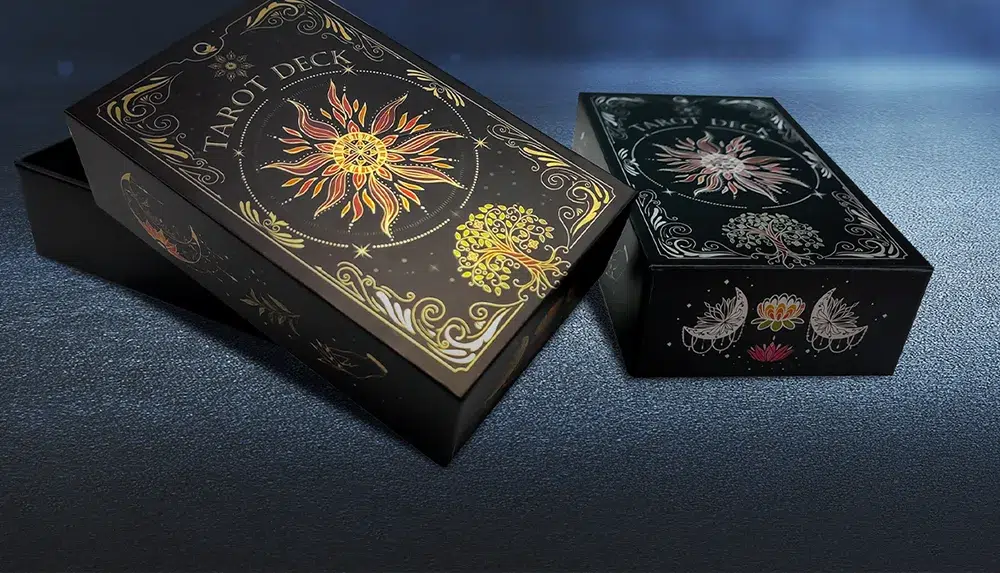Drawing on over three decades of success in the international offset book printing industry, we've put together a helpful guide to the most popular types and styles of hardcover book bindings so you can choose the best option for your printing and publishing needs
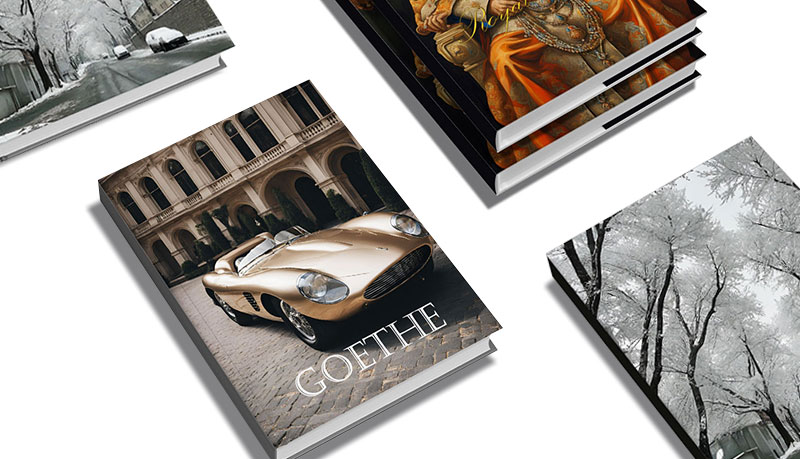
In many ways, it's safe to say that a book's cover matters more than its content. That's in the sense that the wrong cover choices can mean that nobody buys or reads the book and so it won't matter how great the content is because it will never be seen. The flip side of that coin is that a great, well-chosen, and beautifully designed cover can send a book flying off the shelves and make sure that it gets into the hands of the right people; the people who will love what they find inside. While a lot of novels go straight to paperback (also known as softcovers) most other genres – think of coffee-table books, fine art and photography books, history and memoir, biographies and autobiographies, science and nature books, graphic novels, and many more – favor hardcover editions.
Hardcover books, also known as hardbacks or case bound, are widely regarded as a mark of quality and durability and provide a range of qualities that paperbacks can't, such as larger sizes, better protection for high-quality reproductions, a wider choice of papers and special finishes such as embossing, debossing, and foil stamping. While many genre fiction paperbacks are made to be read only once and then either recycled or passed on to the thrift store, most of the other genres we mentioned are meant to be kept and treasured for a lifetime, maybe even as heirlooms traveling down several generations.
So, hardbacks offer a more substantial and long-lasting option compared to paperbacks alongside more room for creativity and styling and a wider range of high quality materials. However, within the catch-all term “hardcover books”, there are several types and styles to consider. So, what are the different types of hardcover books?
In this easy to understand and helpful guide, we'll describe the various types of hardcover books, explore their features, examine their pros and cons, and look at how to work out which style is best suited for your book printing and publishing project. Whether you're commissioning for a mainstream publishing house, a business, or you're an independent creative author, we've got you covered (pun intended!)
1. Case bound laminated hardcover books
A case bound and a hardcover or hardback book are synonymous. Case bound laminated books are standard hardcovers that do not have dust jackets added. Instead, the cover art and text are printed directly onto the cover. This process is known as “image wrapping”. The cover paper is glued to the cardboard case and the edges folded onto the inside before the page block and the endpapers are glued into position. This type of hardcover book is popular, robust, budget-friendly, durable, and fully customizable. Laminating the cover makes it more resistant to wear-and-tear and also helps to bring out the colors in a full-color printed wrap. That said, we print and bind lots of books in this way; combined with excellent artwork and design, they can be as stunning to look at as they are practical to use and inexpensive to produce.
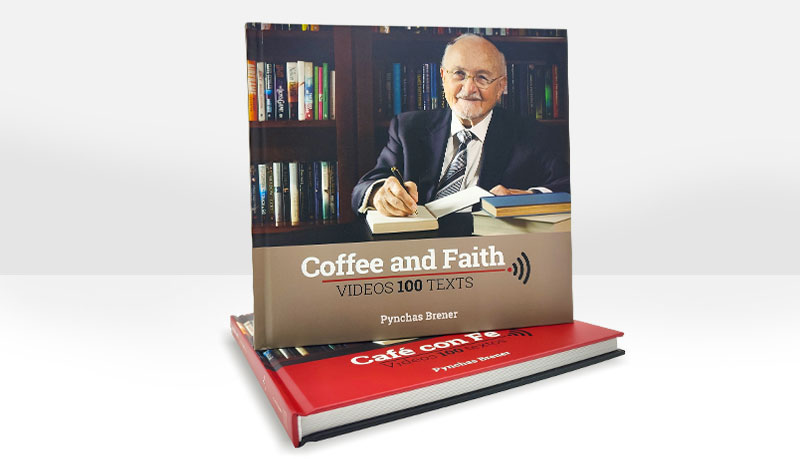
2. Dust jacketed hardcover books
A great addition to any hardcover book is a dust jacket. A dust jacket is a printed protective cover that wraps around a hardcover book but isn't glued to it. It serves the purpose of keeping the cover fresh and clean, protecting the book from spills, scratches, and grime. Dust jackets are not permanently attached to the book and can easily be removed or attached. Aside from added protection, they offer extra printing space on the two flaps, front and back. These flaps usually contain additional promotional information about the book, such as a summary, author bio, and snippets of reviews to complement the back cover blurb and an eye-catching front cover. Generally, however, there's no artwork or sometimes even text printed onto the casing, which is covered only with plain paper, cloth, or leatherette. However, that's not a hard-and-fast rule. It's also a viable option to combine the image wrapped hardcover book with a dust jacket so that you get the best of both worlds. That's what we'll look at next.
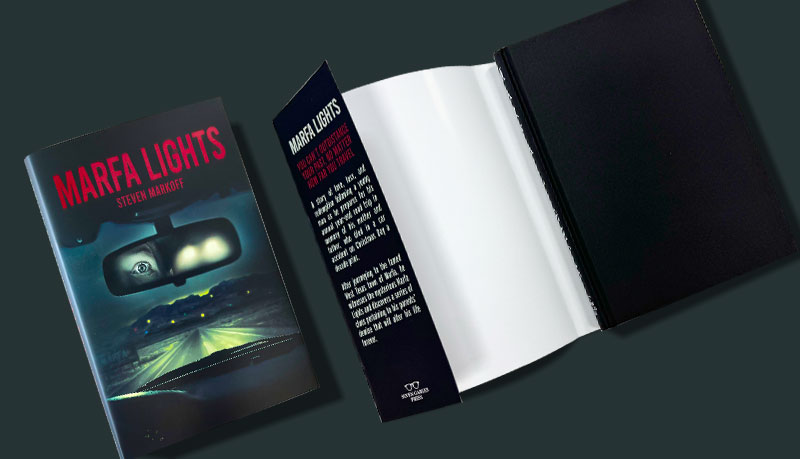
3. Jacketed case laminated hardcover books
The jacketed case laminate style combines the features of a case laminated book with the addition of a dust jacket. This option provides a sense of distinction and is particularly well-suited for literary books, popular science fiction and fantasy sagas, and coffee-table books, special editions, fine art and photography books, and science and nature books. Readers often expect this style for literary works by well-known authors, special editions, and collectible items, and from a marketing perspective, meeting reader expectations is always a good idea. With jacketed case laminated books, publishers typically choose to print the cover art and text on both the book casing itself and the dust jacket and it's also possible to have two different or complementary art designs on each. Dust jackets can also be die cut to create a window, allowing readers to see through to the artwork on the laminated case beneath. That's just one example of the way that his style allows for a wide range of customization options and special finishes. However, jackets can be damaged or torn if not handled with care, and this option is more expensive than basic case laminated hardcovers. So, if you have the budget for a special edition and/or the genre commands this treatment, it's a great option. If you need to keep production costs to a minimum, other options may be better suited to your needs.
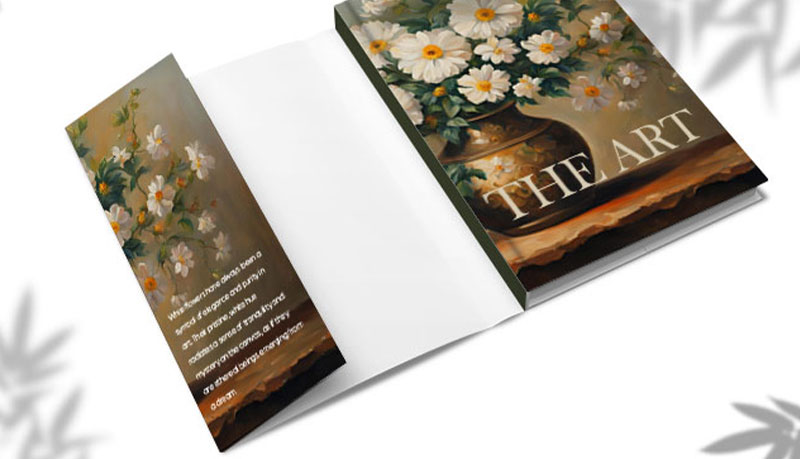
4. Cloth covered hardcover books
A cloth or imitation leather cover offers an interesting and attractive alternative for your hardcover book without sifnificant added expense. This style is available for hardcovers with or without dust jackets and is particularly suitable for literary or collector's edition books, anthologies of short stories, and poetry. Although it may appear relatively nondescript, a cloth cover or an imitation leather (leatherette) cover provides a classic and elegant aesthetic which can do a great job for the right project and target reader. And using special techniques such as embossing, debossing, and metallic foil stamping along with edge gilding or painting use the “plainness” of the covering material to powerful effect as it makes these features really stand out and can add a powerful sense of the “classic” to any volume.
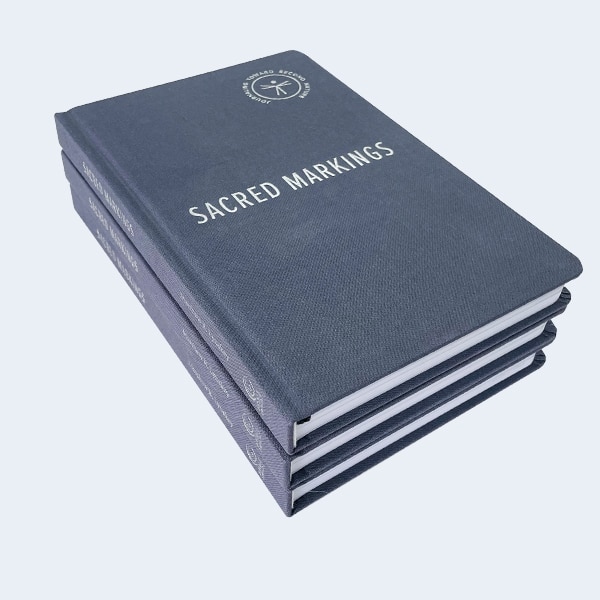
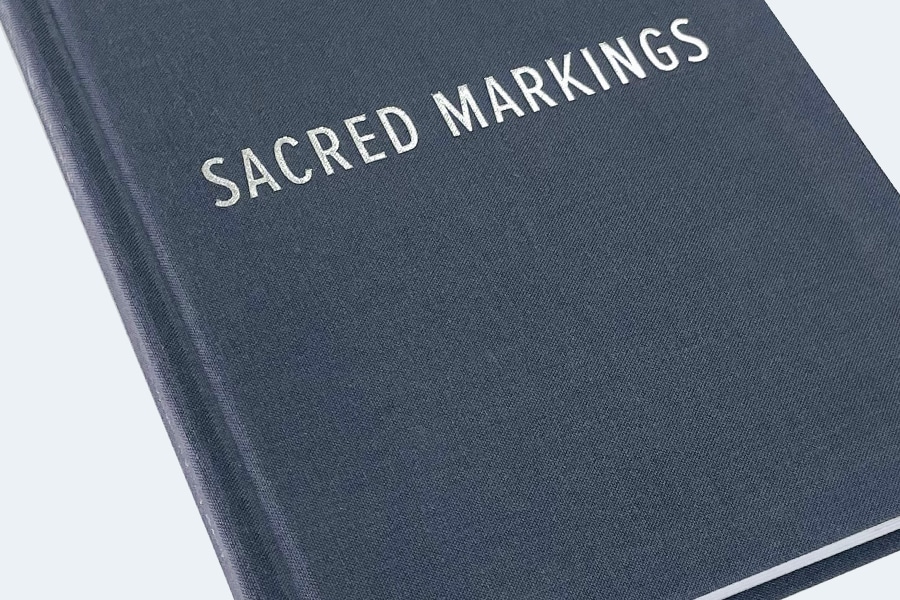
5. Glued-only case binding hardcover books
How the book block (the collated pages combined in order) is attached to the casing makes a lot of difference to the quality and durability of the finished product. Glued-only case binding is a common technique used by most printers for hardcover books. In this method, the pages of the book are attached to the spine using a strong but flexible PUR glue. The spine is also part of the front cover, creating a seamless and durable bond. Adhesive case binding allows for extensive customization and offers a cost-effective option for hardcover book printing. However, the stiff spine of adhesive case bound books will prevent them from laying flat and if not treated with care, the pages can come loose after repeated use and handling.
For that reason and because we are committed to delivering only high-quality products, at QinPrinting we rarely use this method unless a customer specifically requests it. We prefer sewn hardcover bindings, which we do by default, and which is what we'll look at now.
6. Sewn hardcover books
Sewn and glued binding involves sewing bundles of pages, known as signatures, together before gluing and stitching them into the hard casing. This method creates a durable and flexible binding that is particularly suitable for frequently used books. Sewn books are less stiff compared to other hardcover styles, but they are also much tougher.
Besides increased durability, the great advantage of sewn and glued hardcover binding is that the book can be opened and laid flat without damaging the spine or risking the pages coming loose. This is a great advantage for large format books, coffee-table books, and art and photography books with double-page spreads, for example. However, this method can be more expensive than other methods because of the additional labor involved in the sewing process. Here at QinPrinting, we provide sewn and glued hardcover services at the lowest prices because it's a quality choice that we've made to set as standard in order to provide the best possible products for all our customers regardless of their budgets.
While standard sewn and glued hardcovers can be laid flat, with persistent use over long periods of time, even this style can start to see some cracking at the spine or loosening of pages, although it is very rare and you'd need to handle the book a great deal to suffer these effects. But if you need a book that can truly “lay flat” even with extensive use because it's been specifically engineered to do so, then the following option is worth considering.
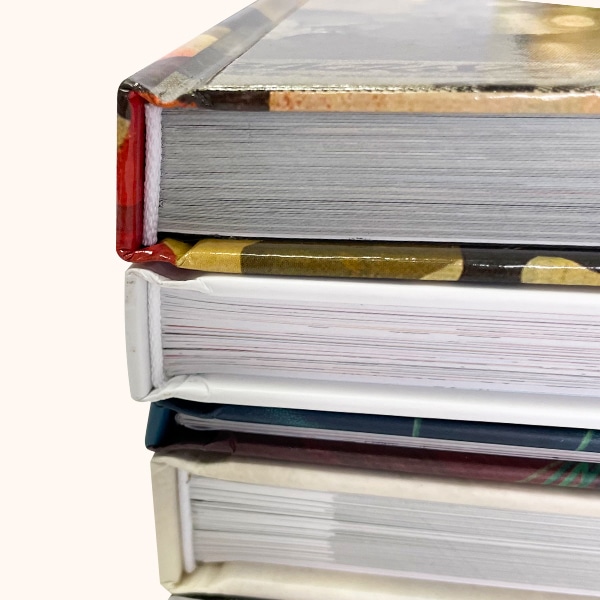
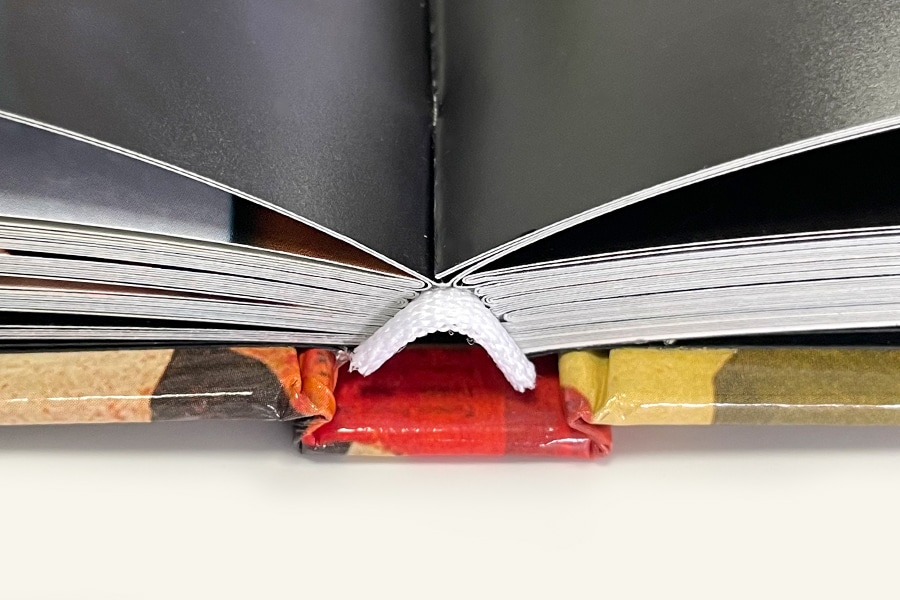
7. Layflat hardcover books
Layflat books are another alternative to adhesive casebound books, as they are specially engineered and constructed to lay completely flat when opened at any page and even with repeated use. This style is ideal for landscape books that display panoramas or books that require easy flipping through pages, such as art books and fine art photography books, top level portfolios, and other works of distinction. The pages are organized in spreads and glued back to back before the binding is glued and sewn. However, because of the complexity and specifics details of design and construction, layflat books typically take longer to print and require special equipment, making them more expensive than other hardcover options. So, if this is the right option for your project, remember to take into account added turnaround time alond with budget requirements.
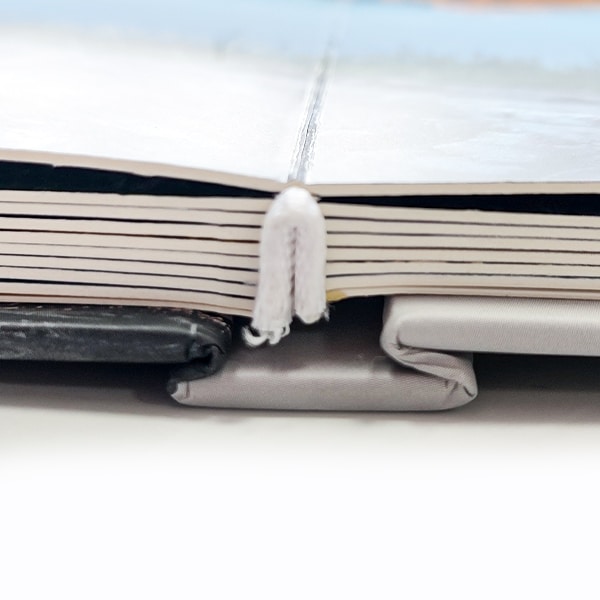
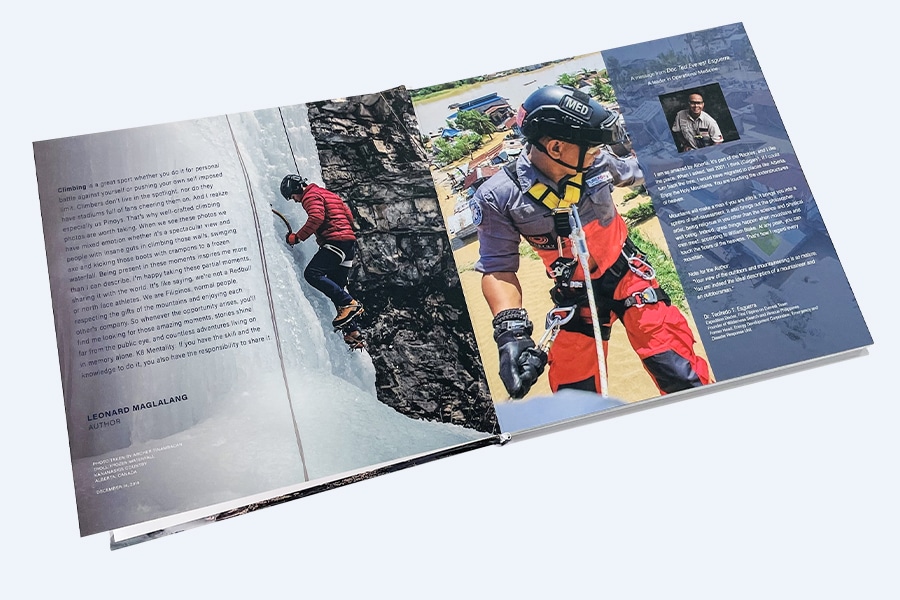
8. Wire-o bound hardcover books
Wire-o bound books are a popular choice for binding documents and both are commonly used for directories, cookbooks, instructional manuals, and more. These bindings allow pages to turn easily, even through 360 degrees, and lay flat, making them convenient for practical use. This style accommodates inserts and pages of various thicknesses along with tabs and foldouts. In both cases, the pages are “loose”, collated, punched or drilled with holes down one side before being bound with a wire spiral or a plastic coil. The “hard covers” are two separate boards, wrapped in printed cover paper and often laminated or varnished and attached to the book in the same way as the pages.
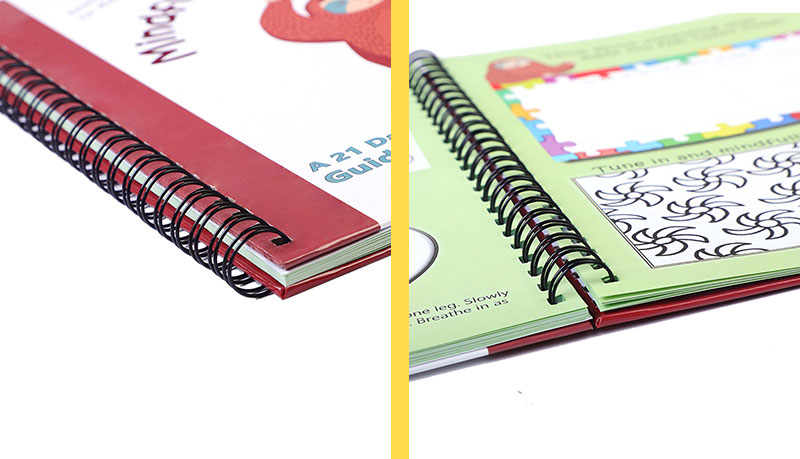
How to choose the best hardcover type for your book
Now you have a good introduction to the most common and popular hardcover book bindings and their potential uses. So, which to choose? When deciding on the best hardcover and binding type for your book, we recommend that you consider the following factors:
1. Budget: If you have a limited budget, options like case laminated or other jacket-less hardcover books may be more suitable for your needs. Also, a simple printed cover would be a good choice without adding features such as embossing or foil stamping, for example. Books with jackets and special finishes are more expensive, but you can still make a very attractive book design without them.
2. Visual appeal: Consider how you want your book to look. If you prefer a minimalistic feel or have already commissioned cover art, case laminated or jacketed case laminated may be the best options. If you have the budget for it and you want to create a truly outstanding book with a customized aesthetic, think about a case laminated cover with the addition of a printed dust jacket and embossed titles, foil stamped art, and UV spot coating to highlight specific features; not to mention colored headbands and even a silk marker ribbon.
3. Target readership: Think about your target readership and their expectations and needs. If you're writing literary books, jacketed case laminate or cloth or leatherette covers may align with readers' expectations. On the other hand, most books for children, for example, won't need a dust jacket.
4. Customization and branding: The more complex bindings allow for a wider range of customization options, like foil stamped laminated covers, spot UV treatment, embossed dust jackets, varnishing, and more. If you're publishing non-fiction, instructional manuals, or academic books, you'll need to think about how the hardcover binding you choose will represent your business brand and what degree of customization you'll need to make a clear and instantly recognizable brand statement.
Well, that just about wraps it up! We hope that the information we've shared with you here is useful. Each option offers its own unique set of advantages, disadvantages, and other considerations. Whether you opt for a case laminated, dust jacket, jacketed case laminated, cloth, leatherette, glued-only case binding, glued and sewn, layflat, or wire-o or spiral bound hardcover book, understanding these features together with their pros and cons will help you make an informed decision. If you're ready to dive into a bit more detail—such as pricing, paper and printing options, how to design your covers and tips for preparing your print files, read our key page, Hardcover Book Printing.
Let's talk! We're here to help.
Designing, printing and publishing, or self-publishing, a high-quality hardcover book, is always a creative project which adds considerable value to your catalog of published work. After close to 30 years of success in the industry, we know what we're doing in this highly specialized process and have all the latest technology and expertise to hand. We take customer care seriously and will guide you every step of the way to producing a truly beautiful, competitively priced hardcover book. Your success is our success. Talk to us today. Shoot us an email to [email protected] or call us on +1 951 866 3971 (remembering potential time zone differences!) and we'll be delighted to discuss your needs, answer your questions, and help in any other way we can.





